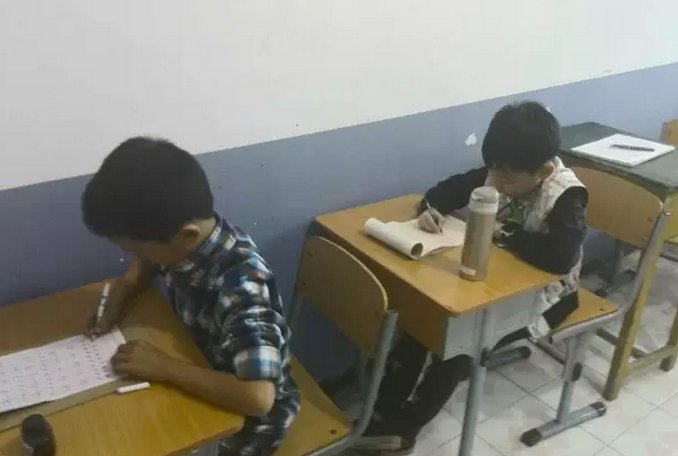Does the posture of holding a pen have anything to do with writing well? The posture of holding the pen has a certain relationship with the quality of writing. It is true that in life, we have seen people who hold the pen incorrectly but write beautifully. Some calligraphers use their left hand to hold the pen or even use their mouth to write well, but they can still write well. However, people who can write beautiful handwriting cannot hold the pen well. The postures are mostly standard. The correct posture of holding the pen can fully "explore" the flexibility of the fingers, which is conducive to better playing the "practical" role. Therefore, as soon as primary school students start holding a pen to write, they must develop a correct pen-holding posture, which will promote good handwriting to a certain extent.

Although most parents now have very strict requirements for their children's writing posture, such as whether they sit upright, whether they lie on the table, and whether they tilt their heads, they don't pay much attention to their children's pen-holding posture. Some parents believe that sitting posture will affect children's vision. In fact, the biggest cause of myopia is the wrong posture of holding a pen. Because the wrong posture of holding the pen directly leads to the narrowing of the visual field when writing, in order to expand the visual field, the child has to lie down and look closer, tilting the head to look, the reading and writing distance will continue to shorten, and over time, it is easy to become myopia.
Therefore, there is a certain relationship between the pen holding posture and the correct sitting posture. The first is the correct sitting posture:
1.Straighten your head. The head is upright, tilted forward naturally, and the eyes are about one foot away from the table.
2. Keep your shoulders flat. Let your arms hang naturally, spread them left and right, and keep a certain distance. Press the paper with your left hand and hold the pen with your right hand.
3. Keep your waist straight. Sit firmly, keep your shoulders flat, keep your upper body upright, lean forward slightly, keep your chest a fist away from the table, and relax your whole body naturally.
4. Keep your feet on the ground. Keep your feet flat, separated from left to right, and step naturally and firmly, preferably shoulder-width apart.
Then there is the correct "pen posture":
The three-finger holding method should be used. That is, "pinch", "support", "pad", and "lean" to achieve "the fingers are solid and the palm is empty", that is, the fingers should be solid when holding the pen, and the palm should be empty, like a hollow fist, so that the pen can be moved flexibly when writing.
1. Pinch: Hold the pen with your right hand, pinch the lower end of the pen holder with your thumb and index finger from two directions respectively. The thumb is on the left side of the pen holder, slightly behind the index finger (slightly further from the pen tip). The index finger is on the right side of the barrel, in front of the thumb (slightly closer to the nib).
2. Support: Use the outside of the first joint of the middle finger (the root of the nail cap of the middle finger) to support the penholder. After the thumb and index finger hold the penholder, the vertical surface formed by the front end is in front of the middle finger, and the middle finger is under the index finger.
3. Pad: The ring finger and little finger are naturally stacked behind the middle finger and bent towards the palm (shaped like a hollow fist).
4. Lean: The penholder is tilted to the right and back at a 45-degree angle to the paper surface, and is close to the third joint of the index finger and the tiger's mouth.
"Bi Zhi" formula:
- Resistance, second pressure and third support, the fingers are strong, the palm is weak, the wrist is flexible,
The angle is suitable and the direction is right, and the weight of the strokes is carefully considered.
Pen holding posture has a lot to do with writing well. The correct posture of holding the pen can fully "explore" the flexibility of the fingers, which is conducive to better use of the fingers. Therefore, children must develop the habit of using correct sitting and pen posture when writing, which will greatly promote good handwriting.








